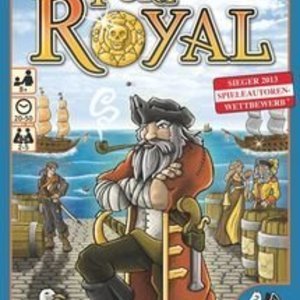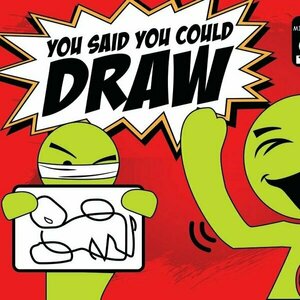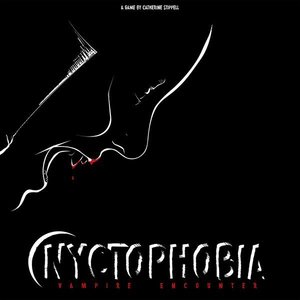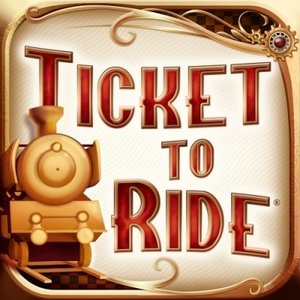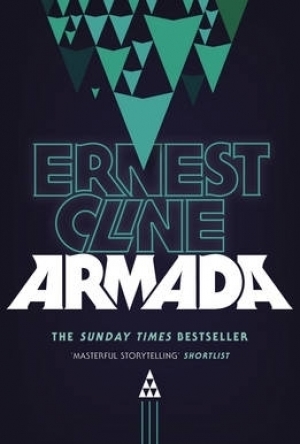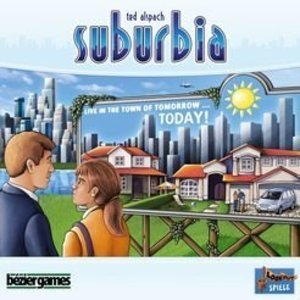Search
Search results
Purple Phoenix Games (2266 KP) rated Port Royal in Tabletop Games
Jun 12, 2019
Port Royal looks and sounds like a pirate-y game, but be warned – it’s not. It’s more about what gets done behind the scenes, in the port as you prepare to cast off on an adventure! You’ve got to hire a crew and trade with others to gather necesssry supplies. Put your bookkeeping to the test, and SEA if you’ve got what it takes. (See what I did there?)
Port Royal is the central hub for trading and commerce in the kingdom. Ships from distant countries come in to trade, and crew-members-for-hire wander the docks looking for work. Do you have what it takes to make a name for yourself in this bustling port? Put your bargaining skills to the test to find out!
DISCLAIMER: There are several expansions to this game, but we are not reviewing them at this time. Should we review them in the future we will either update this review or post a link to the new material here. -T
Port Royal is a card drafting game of press-your-luck in which players are trying to amass 12 or more Influence Points. Each turn is played in two phases: the Discovery Phase and the Trade and Hire Phase. During the Discovery Phase, the active player draws cards one at a time to create the Harbor for that turn. The cards revealed will either be Characters, Ships, Missions, or Tax cards. The active player can draw as many or as few cards as they would like, with one catch – if you reveal a ship with a flag matching one already in the Harbor, the turn is a bust and all cards are discarded! Think wisely before trying to push your luck when creating the Harbor! If you’re too risky, you could bust, but if you play it too safe, you won’t have many card choices for the next phase. During the Trade and Hire Phase, players interact with cards in the harbor. The number of cards players can take depends on the number of different ships in the Harbor. Players can hire characters by paying their hiring cost in gold, can discard ship cards and collect gold for performing a “trade,” or can complete Mission cards if they have the required symbols on their hired cards. The Discovery Phase is performed by the active player alone, but the Trade and Hire Phase can be performed by each player, in order, after the active player. If you decide to act on another player’s turn, you must pay them one gold coin. The game ends at the end of a round in which one player has amassed 12 or more Influence Points, collected from Character and Mission cards. The player with the most points wins!
One thing that I really like about Port Royal is that it’s a competitive game, but not a confrontational game. Besides paying to act on another player’s turn, there’s not a lot of player interaction, and as someone who can get pretty competitive, I really appreciate that. Yes, we are competing against each other, but with so little interaction, I’m more focused on my own strategy and cards than I am in trying to sabotage my fellow players. Another thing I like about Port Royal is the push-your-luck aspect of the Discovery Phase. I like it more than other push-your-luck games because all decisions are made by the active player – you’re not having to bluff or directly compete with another player when drawing your Harbor cards. It’s still a game of chicken, but against yourself. There’s still the element of push-your-luck, but it feels a little more safe than nerve-wracking.
All that being said, what I don’t like about Port Royal is the actual gameplay. Since there’s so little player interaction and the entire Discovery Phase is performed by one player alone, it feels like there’s a bit of downtime. Unless you’re the active player, you only get to act during half of every turn, so time is spent just sitting and watching other players. It ultimately all comes down to how quickly everyone performs their turns, but there’s just not a ton of engagement in my opinion. Don’t get me wrong – it’s a neat game. It just feels a little boring to play sometimes. It also takes some time to build up momentum to successfully execute a strategy. Everyone starts with 3 gold coins, but most cards cost more, and depending on when you get to act in the Trade and Hire Phase, any cards you could have afforded may already have been taken. So it might take several rounds before you’re able to really begin implementing a solid strategy, with the first few rounds just being a card-grab.
For the most part, I enjoy playing Port Royal. It’s mildly strategic, but the lack of interaction can make it feel a little stale sometimes. It’s not a game I pull out every single game night, but it’s one that I would most likely play if someone suggested it. Purple Phoenix Games gives Port Royal a buccaneer’s 7 / 12.
https://purplephoenixgames.wordpress.com/2019/04/16/port-royal-review/
Port Royal is the central hub for trading and commerce in the kingdom. Ships from distant countries come in to trade, and crew-members-for-hire wander the docks looking for work. Do you have what it takes to make a name for yourself in this bustling port? Put your bargaining skills to the test to find out!
DISCLAIMER: There are several expansions to this game, but we are not reviewing them at this time. Should we review them in the future we will either update this review or post a link to the new material here. -T
Port Royal is a card drafting game of press-your-luck in which players are trying to amass 12 or more Influence Points. Each turn is played in two phases: the Discovery Phase and the Trade and Hire Phase. During the Discovery Phase, the active player draws cards one at a time to create the Harbor for that turn. The cards revealed will either be Characters, Ships, Missions, or Tax cards. The active player can draw as many or as few cards as they would like, with one catch – if you reveal a ship with a flag matching one already in the Harbor, the turn is a bust and all cards are discarded! Think wisely before trying to push your luck when creating the Harbor! If you’re too risky, you could bust, but if you play it too safe, you won’t have many card choices for the next phase. During the Trade and Hire Phase, players interact with cards in the harbor. The number of cards players can take depends on the number of different ships in the Harbor. Players can hire characters by paying their hiring cost in gold, can discard ship cards and collect gold for performing a “trade,” or can complete Mission cards if they have the required symbols on their hired cards. The Discovery Phase is performed by the active player alone, but the Trade and Hire Phase can be performed by each player, in order, after the active player. If you decide to act on another player’s turn, you must pay them one gold coin. The game ends at the end of a round in which one player has amassed 12 or more Influence Points, collected from Character and Mission cards. The player with the most points wins!
One thing that I really like about Port Royal is that it’s a competitive game, but not a confrontational game. Besides paying to act on another player’s turn, there’s not a lot of player interaction, and as someone who can get pretty competitive, I really appreciate that. Yes, we are competing against each other, but with so little interaction, I’m more focused on my own strategy and cards than I am in trying to sabotage my fellow players. Another thing I like about Port Royal is the push-your-luck aspect of the Discovery Phase. I like it more than other push-your-luck games because all decisions are made by the active player – you’re not having to bluff or directly compete with another player when drawing your Harbor cards. It’s still a game of chicken, but against yourself. There’s still the element of push-your-luck, but it feels a little more safe than nerve-wracking.
All that being said, what I don’t like about Port Royal is the actual gameplay. Since there’s so little player interaction and the entire Discovery Phase is performed by one player alone, it feels like there’s a bit of downtime. Unless you’re the active player, you only get to act during half of every turn, so time is spent just sitting and watching other players. It ultimately all comes down to how quickly everyone performs their turns, but there’s just not a ton of engagement in my opinion. Don’t get me wrong – it’s a neat game. It just feels a little boring to play sometimes. It also takes some time to build up momentum to successfully execute a strategy. Everyone starts with 3 gold coins, but most cards cost more, and depending on when you get to act in the Trade and Hire Phase, any cards you could have afforded may already have been taken. So it might take several rounds before you’re able to really begin implementing a solid strategy, with the first few rounds just being a card-grab.
For the most part, I enjoy playing Port Royal. It’s mildly strategic, but the lack of interaction can make it feel a little stale sometimes. It’s not a game I pull out every single game night, but it’s one that I would most likely play if someone suggested it. Purple Phoenix Games gives Port Royal a buccaneer’s 7 / 12.
https://purplephoenixgames.wordpress.com/2019/04/16/port-royal-review/
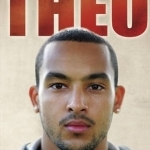
Theo: Growing Up Fast
Book
When the name of Theo Walcott was included in the England squad for the 2006 World Cup, shock waves...
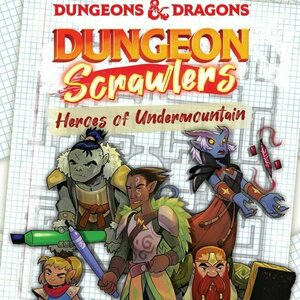
Dungeon Scrawlers: Heroes of Undermountain
Tabletop Game
In Dungeons & Dragons: Dungeon Scrawlers – Heroes of Undermountain, you and other adventurers are...
Purple Phoenix Games (2266 KP) rated You Said You Could Draw in Tabletop Games
Apr 23, 2021
Excuse me, title of game, but I NEVER said I could draw. Is it just me or does nearly everyone feel the need to preface every drawing game with a declaration that they are horrible artists and will probably perform disastrously? I have found this to be the case, as least for myself and about 90%+ of the people with whom I play, and it is especially rampant with the tongue-out drawers in the world. But we all still enjoy the old favorites like Pictionary and Win, Lose, or Draw! How about if we add another gimmick to these classics in order to turn the games on their ears? Enter You Said You Could Draw.
In You Said You Could Draw (I will just acronymize to YSYCD) players are attempting to win the game by scoring the most points. The provided score board has space for each player to earn 20 points, though agreements could be made by players to stop at any number of points.
DISCLAIMER: We were provided a prototype copy of this game for the purposes of this review. These are preview copy components, and I do not know for sure if the final components will be any different from these shown. Also, it is not my intention to detail every rule in the game, but to give an idea of how the game is played. You are invited to download the rulebook, back the game through the Kickstarter campaign launching May 8, 2021, or through any retailers stocking it after fulfillment. -T
To setup a game of YSYCD place the score board anywhere on the table and players choose which color board they wish to represent themselves. Players are also given a dry erase marker. The large deck of cards is placed somewhere near the score board, along with the blindfold. Players will roll the die to determine the first player, and the game may now begin!
YSYCD is played in turns until a player reaches the aforementioned ending score. On a turn a player will draw a card, roll the die, then draw. On each card is a list of six prompts to be drawn by the player and the result of the die roll determines which prompt the player must draw. Once the player is ready they will don the blindfold and begin drawing on the large board. When the masterpieces is complete the artist will write the name of the player they believe will guess correctly. Both the drawing process and the name writing are secret – no lookyloos! When the artist reveals their labor each player will secretly write their guess on their player boards, to be revealed simultaneously once all players have finished. The artist reveals their choice and the other players reveal their hilarious guesses. Points may now be awarded.
The artist will receive one point if at least one player has guessed correctly, with a bonus one point earned if the player they wrote on their board guessed correctly. Each player who guessed the prompt correctly also scores one point. If ALL players guess correctly except for one lonely player, the lonely player will earn a painful NEGATIVE two ( -2 ) points!
Players will notice that one prompt on each side of the card includes a star icon. Should this prompt be rolled for the turn the points awarded for the artists and correct guessers are three, versus the typical one. Play continues in this fashion until a player has reached the agreed score threshold and claims victory!
Components. This game boasts two large and eight smaller dry erase boards with eight dry erase markers. The boards are fine, but the markers (at least in this prototype version) are very low quality, especially the erasers. We resorted to using napkins for our erasing needs, as they did not smear as much. The 1d6 is fine, and the blindfold is very comfortable (thank you, JPN Games!). The cards are fine quality and there are 100 double-sided cards, offering 1200 prompt options to draw! I normally also cover art direction and theming here, but there is very little art, with most of it on the box cover. The box cover in this version features two players having a great time playing the game in a color VERY close to our logo’s Volt color. So I’m a fan of that for sure.
The rulebook is a simple folded cardstock that could easily become a duplexed sheet of paper or stock. The rules are incredibly simple to learn and teach, which makes this a great entry for families.
I recently broke this one out to play with my brother-in-law, his wife, and their twin 10-year-old children. When I say that it has been a long time since I laughed so hard while playing games, I certainly mean it. Most drawing games favor the talented artists of the group, but YSYCD offers the great equalizer – that blindfold. Sure, someone could be able to draw an excellent Sonic the Hedgehog (not a sponsor), but once you take away the spacial awareness drawing becomes a lot more difficult. And having a 10-year-old look into your eyes and tell you they drew a Chef instead of your guess of Quasimodo makes for a very interesting adult-child dynamic.
All in all I have had a great time with this game. The blindfold is what makes this special, and rolling the die to select the prompt causes each player to begin their turns on the same artistry level as their opponents. I dig that. A lot. I will be honest here – this is not a game that I would see at a store and be interested in buying or playing. But I gave it a shot with the family and I now have a party game that differs from my other party games in my collection and I am all the happier for it. You Said You Could Draw is not for the hard core gamer. It is for the gamer who needs a break from the brain burning and is able to relax a bit and have fun – even at their own expense. If this sounds interesting to you, I urge you to check out the Kickstarter campaign, launching May 8, 2021. Pick up a copy or two or twelve and give some away. The holidays are always just around the corner. Also, be warned that some children cannot accept that their Chef looks like Quasimodo. I learned this the hard way.
In You Said You Could Draw (I will just acronymize to YSYCD) players are attempting to win the game by scoring the most points. The provided score board has space for each player to earn 20 points, though agreements could be made by players to stop at any number of points.
DISCLAIMER: We were provided a prototype copy of this game for the purposes of this review. These are preview copy components, and I do not know for sure if the final components will be any different from these shown. Also, it is not my intention to detail every rule in the game, but to give an idea of how the game is played. You are invited to download the rulebook, back the game through the Kickstarter campaign launching May 8, 2021, or through any retailers stocking it after fulfillment. -T
To setup a game of YSYCD place the score board anywhere on the table and players choose which color board they wish to represent themselves. Players are also given a dry erase marker. The large deck of cards is placed somewhere near the score board, along with the blindfold. Players will roll the die to determine the first player, and the game may now begin!
YSYCD is played in turns until a player reaches the aforementioned ending score. On a turn a player will draw a card, roll the die, then draw. On each card is a list of six prompts to be drawn by the player and the result of the die roll determines which prompt the player must draw. Once the player is ready they will don the blindfold and begin drawing on the large board. When the masterpieces is complete the artist will write the name of the player they believe will guess correctly. Both the drawing process and the name writing are secret – no lookyloos! When the artist reveals their labor each player will secretly write their guess on their player boards, to be revealed simultaneously once all players have finished. The artist reveals their choice and the other players reveal their hilarious guesses. Points may now be awarded.
The artist will receive one point if at least one player has guessed correctly, with a bonus one point earned if the player they wrote on their board guessed correctly. Each player who guessed the prompt correctly also scores one point. If ALL players guess correctly except for one lonely player, the lonely player will earn a painful NEGATIVE two ( -2 ) points!
Players will notice that one prompt on each side of the card includes a star icon. Should this prompt be rolled for the turn the points awarded for the artists and correct guessers are three, versus the typical one. Play continues in this fashion until a player has reached the agreed score threshold and claims victory!
Components. This game boasts two large and eight smaller dry erase boards with eight dry erase markers. The boards are fine, but the markers (at least in this prototype version) are very low quality, especially the erasers. We resorted to using napkins for our erasing needs, as they did not smear as much. The 1d6 is fine, and the blindfold is very comfortable (thank you, JPN Games!). The cards are fine quality and there are 100 double-sided cards, offering 1200 prompt options to draw! I normally also cover art direction and theming here, but there is very little art, with most of it on the box cover. The box cover in this version features two players having a great time playing the game in a color VERY close to our logo’s Volt color. So I’m a fan of that for sure.
The rulebook is a simple folded cardstock that could easily become a duplexed sheet of paper or stock. The rules are incredibly simple to learn and teach, which makes this a great entry for families.
I recently broke this one out to play with my brother-in-law, his wife, and their twin 10-year-old children. When I say that it has been a long time since I laughed so hard while playing games, I certainly mean it. Most drawing games favor the talented artists of the group, but YSYCD offers the great equalizer – that blindfold. Sure, someone could be able to draw an excellent Sonic the Hedgehog (not a sponsor), but once you take away the spacial awareness drawing becomes a lot more difficult. And having a 10-year-old look into your eyes and tell you they drew a Chef instead of your guess of Quasimodo makes for a very interesting adult-child dynamic.
All in all I have had a great time with this game. The blindfold is what makes this special, and rolling the die to select the prompt causes each player to begin their turns on the same artistry level as their opponents. I dig that. A lot. I will be honest here – this is not a game that I would see at a store and be interested in buying or playing. But I gave it a shot with the family and I now have a party game that differs from my other party games in my collection and I am all the happier for it. You Said You Could Draw is not for the hard core gamer. It is for the gamer who needs a break from the brain burning and is able to relax a bit and have fun – even at their own expense. If this sounds interesting to you, I urge you to check out the Kickstarter campaign, launching May 8, 2021. Pick up a copy or two or twelve and give some away. The holidays are always just around the corner. Also, be warned that some children cannot accept that their Chef looks like Quasimodo. I learned this the hard way.
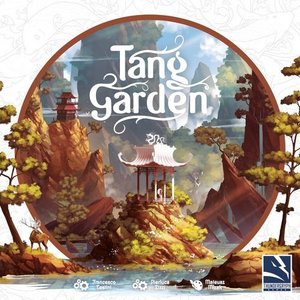
Tang Garden
Tabletop Game
The Tang dynasty was considered the first golden age of the classical and now iconic Chinese...
BoardGames 2018Games ZenGames GardenGames
Purple Phoenix Games (2266 KP) rated Nyctophobia: Vampire Encounter in Tabletop Games
Jun 12, 2019
When it comes to board gaming, there are many tried and true mechanics that appear in most games. If it ain’t broke, don’t fix it, right? That being said, it’s always neat when a game creates an entirely new mechanic that has never been seen before. Nyctophobia is one of those games. When I heard about it, I knew I had to try it. It’s quite a clever idea and it makes for a unique and fun game!
DISCLAIMER: There are technically 2 versions of this game – the OG version and the Vampire version. Thematically, they may be different, but mechanically and gameplay-wise, they’re the same! For the purposes of this review, we will be playing the Vampire Encounter version. -L
A lighthearted trip to the woods has taken a startling turn when you and your friends come across a Vampire! And to make things worse, the Vampire has managed to lure one of your buddies deep into the woods with him! You can’t just turn tail and run – you’ve gotta save your friend! The sun has set, though, and the woods are way more ominous than you thought. You and your friends must cooperate to carefully and quietly navigate in total darkness to avoid disclosing your position to the Vampire while searching for your friend. Will you manage to not only find your buddy, but make it back to the car for your getaway? Or will the Vampire manage to pick you all off, one by one, as he creeps around in the darkness waiting for the opportunity to pounce?
Nyctophobia: Vampire Encounter is a semi-cooperative 1-vs-All memory game with a twist – all players (except for the Vampire player) must wear black-out glasses and cannot see the board. All turns and movement are taken based on feel. You ARE in the dark woods after all – it’s not like you can see your surroundings. Basically how it works is that the Vampire player kind of acts as a GM for the game. They can see the board, and help guide the players’ hands to their pieces and move the player pieces as requested. The players are blind and must rely on feeling their way around the board (avoiding trees and the Vampire!) and communicating the perceived layout to their comrades. The Vampire player then sneaks around the board, silently trying to corner the other players and abduct them. Each player gets a special ability to use on their turns, and there’s a small combat element involved if a player ever runs into the Vampire. The goal of the game, for regular players, is to work with your friends to find the kidnapped NPC (represented by a cardboard standee) and get back to the car to escape. The goal of the game for the Vampire player is to pick off all other players until none remain.
I think this is a super neat game. It’s pretty unique and it’s fun to play! You’re trying to cooperate with your friends to create a strategy for a board that you can’t see. It’s definitely a challenge, but it’s presented in such a novel way that makes it enjoyable. The overall atmosphere of the game is great. The nerves and pressure can really get to the players as they are (quite literally) flailing around in the dark. The Vampire player can have a lot of fun as the GM – do you taunt your players and make them second-guess every move, or do you lay low and stay quiet until juuuust the right moment? Nyctophobia feels like more than just a game while you’re playing, and that is what makes it so exciting.
The only real issue I’ve run into with this game has to do with the components themselves. The board is an 8×8 grid, with the layout set up in secret by the Vampire player. On a regular player turn, you can feel up to 1 space in each adjacent direction to your current location. The only issue is that sometimes, unless the player is diligent, they could accidentally (or purposefully?) feel too many spaces than are allowed – either diagonally or 2 or more spaces away, for example. The way I’ve come up with to alleviate this issue is to have players use only 1 finger when interacting with their piece/the board. That way there can be no extra feeling. And I also, as the Vampire player, will move player pieces for them – the player tells me in which direction to move and I move the piece before guiding their hand back. Maybe if the board were a little larger, this problem would be eliminated? I’m really not sure, but the method I’ve come up with to combat it has worked well so far!
Overall, I enjoy Nyctophobia. It’s a neat game with a unique mechanical aspect and fun player interactions. Is it my favorite game to play? No. But it’s one that I like breaking out for newer gamers and for some lighthearted fun! If you haven’t done so already, give Nyctophobia a try because it’s a refreshingly new take on the modern board game. Purple Phoenix Games gives it a haunting 15 / 18.
https://purplephoenixgames.wordpress.com/2019/05/14/nyctophobia-review/
DISCLAIMER: There are technically 2 versions of this game – the OG version and the Vampire version. Thematically, they may be different, but mechanically and gameplay-wise, they’re the same! For the purposes of this review, we will be playing the Vampire Encounter version. -L
A lighthearted trip to the woods has taken a startling turn when you and your friends come across a Vampire! And to make things worse, the Vampire has managed to lure one of your buddies deep into the woods with him! You can’t just turn tail and run – you’ve gotta save your friend! The sun has set, though, and the woods are way more ominous than you thought. You and your friends must cooperate to carefully and quietly navigate in total darkness to avoid disclosing your position to the Vampire while searching for your friend. Will you manage to not only find your buddy, but make it back to the car for your getaway? Or will the Vampire manage to pick you all off, one by one, as he creeps around in the darkness waiting for the opportunity to pounce?
Nyctophobia: Vampire Encounter is a semi-cooperative 1-vs-All memory game with a twist – all players (except for the Vampire player) must wear black-out glasses and cannot see the board. All turns and movement are taken based on feel. You ARE in the dark woods after all – it’s not like you can see your surroundings. Basically how it works is that the Vampire player kind of acts as a GM for the game. They can see the board, and help guide the players’ hands to their pieces and move the player pieces as requested. The players are blind and must rely on feeling their way around the board (avoiding trees and the Vampire!) and communicating the perceived layout to their comrades. The Vampire player then sneaks around the board, silently trying to corner the other players and abduct them. Each player gets a special ability to use on their turns, and there’s a small combat element involved if a player ever runs into the Vampire. The goal of the game, for regular players, is to work with your friends to find the kidnapped NPC (represented by a cardboard standee) and get back to the car to escape. The goal of the game for the Vampire player is to pick off all other players until none remain.
I think this is a super neat game. It’s pretty unique and it’s fun to play! You’re trying to cooperate with your friends to create a strategy for a board that you can’t see. It’s definitely a challenge, but it’s presented in such a novel way that makes it enjoyable. The overall atmosphere of the game is great. The nerves and pressure can really get to the players as they are (quite literally) flailing around in the dark. The Vampire player can have a lot of fun as the GM – do you taunt your players and make them second-guess every move, or do you lay low and stay quiet until juuuust the right moment? Nyctophobia feels like more than just a game while you’re playing, and that is what makes it so exciting.
The only real issue I’ve run into with this game has to do with the components themselves. The board is an 8×8 grid, with the layout set up in secret by the Vampire player. On a regular player turn, you can feel up to 1 space in each adjacent direction to your current location. The only issue is that sometimes, unless the player is diligent, they could accidentally (or purposefully?) feel too many spaces than are allowed – either diagonally or 2 or more spaces away, for example. The way I’ve come up with to alleviate this issue is to have players use only 1 finger when interacting with their piece/the board. That way there can be no extra feeling. And I also, as the Vampire player, will move player pieces for them – the player tells me in which direction to move and I move the piece before guiding their hand back. Maybe if the board were a little larger, this problem would be eliminated? I’m really not sure, but the method I’ve come up with to combat it has worked well so far!
Overall, I enjoy Nyctophobia. It’s a neat game with a unique mechanical aspect and fun player interactions. Is it my favorite game to play? No. But it’s one that I like breaking out for newer gamers and for some lighthearted fun! If you haven’t done so already, give Nyctophobia a try because it’s a refreshingly new take on the modern board game. Purple Phoenix Games gives it a haunting 15 / 18.
https://purplephoenixgames.wordpress.com/2019/05/14/nyctophobia-review/

iMusic - Ulimited Music Video Player & Streamer
Music and Utilities
App
iMusic is natively designed, to give you the best possible mobile music & music video experience and...
Akward (448 KP) rated Ticket to Ride in Apps
May 24, 2018
Lots of replayability (1 more)
Very few bugs
Definitely one of the better board game apps. It has local multi-player, which works well. Online play can be difficult, as most of the players are very hardcore.
This is a great way to play the additional boards. In real life, those boards cost $40-50. But in the app, they can be acquired for $2-5.
This is a great way to play the additional boards. In real life, those boards cost $40-50. But in the app, they can be acquired for $2-5.
Rachel Howser Roberts (96 KP) rated Armada in Books
Jun 21, 2018 (Updated Jun 21, 2018)
A solid second novel
While not the pop culture thrill ride that was Ready Player One, this book still held my interest. It will appeal to gamers and Sci-Fi fans with its premise of a video game being used to train the general populace as soldiers. You need to be able to speak fluent “geek” (Star Wars, Star Trek, Battlestar Galactica, etc.) to catch all the references.
Akward (448 KP) rated Suburbia in Tabletop Games
Jul 20, 2018
City building theme (1 more)
Combos
Great Combo-Building Game
Surbubia is one of the best city building games around. It doesn't quite scratch my itch for a Sim City board game, but it does a great job with the theme.
The entire game revolves around placing buildings next to each other to built combos and a more effective city. Gameplay goes quickly, and has just enough player interaction to be fun.
The entire game revolves around placing buildings next to each other to built combos and a more effective city. Gameplay goes quickly, and has just enough player interaction to be fun.
